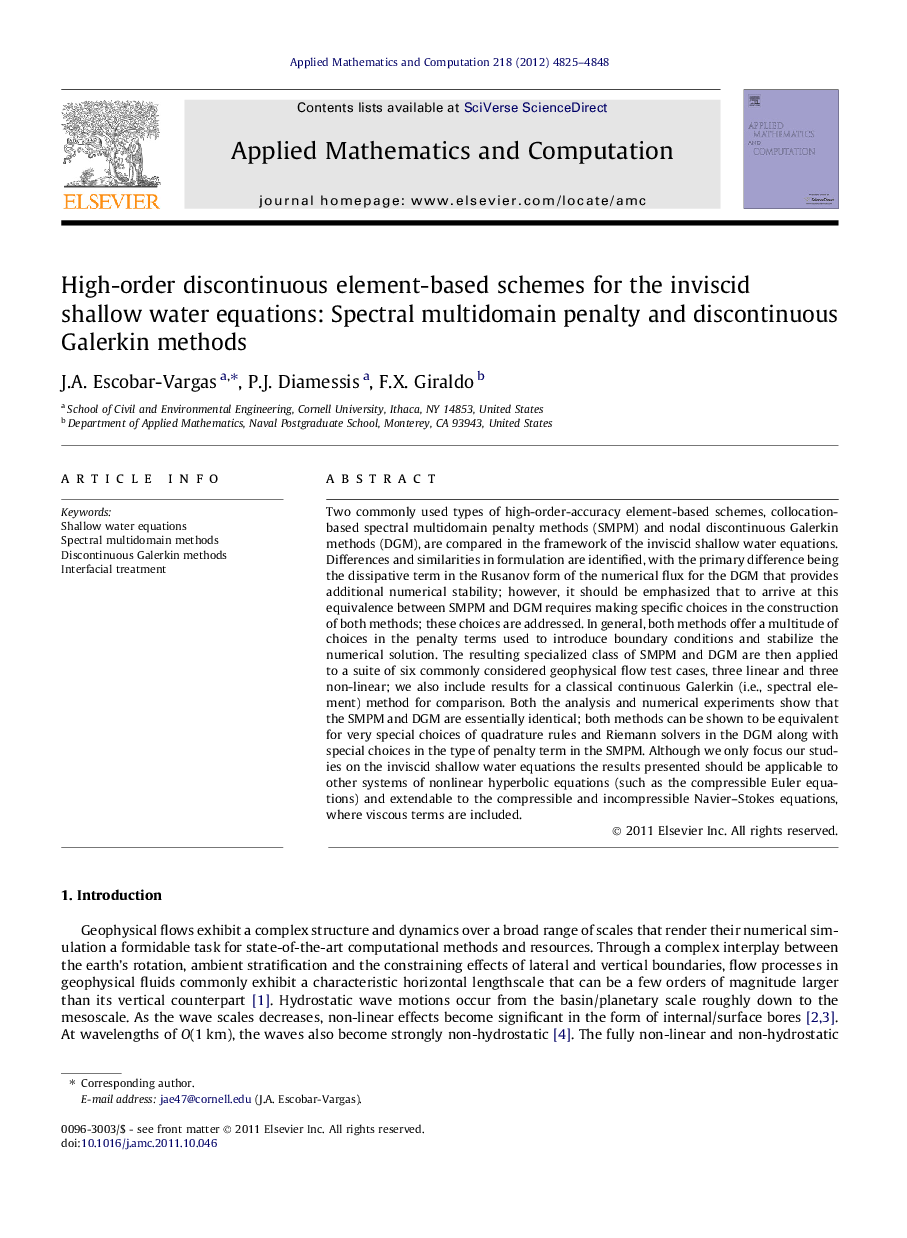| Article ID | Journal | Published Year | Pages | File Type |
|---|---|---|---|---|
| 4631313 | Applied Mathematics and Computation | 2012 | 24 Pages |
Two commonly used types of high-order-accuracy element-based schemes, collocation-based spectral multidomain penalty methods (SMPM) and nodal discontinuous Galerkin methods (DGM), are compared in the framework of the inviscid shallow water equations. Differences and similarities in formulation are identified, with the primary difference being the dissipative term in the Rusanov form of the numerical flux for the DGM that provides additional numerical stability; however, it should be emphasized that to arrive at this equivalence between SMPM and DGM requires making specific choices in the construction of both methods; these choices are addressed. In general, both methods offer a multitude of choices in the penalty terms used to introduce boundary conditions and stabilize the numerical solution. The resulting specialized class of SMPM and DGM are then applied to a suite of six commonly considered geophysical flow test cases, three linear and three non-linear; we also include results for a classical continuous Galerkin (i.e., spectral element) method for comparison. Both the analysis and numerical experiments show that the SMPM and DGM are essentially identical; both methods can be shown to be equivalent for very special choices of quadrature rules and Riemann solvers in the DGM along with special choices in the type of penalty term in the SMPM. Although we only focus our studies on the inviscid shallow water equations the results presented should be applicable to other systems of nonlinear hyperbolic equations (such as the compressible Euler equations) and extendable to the compressible and incompressible Navier–Stokes equations, where viscous terms are included.
